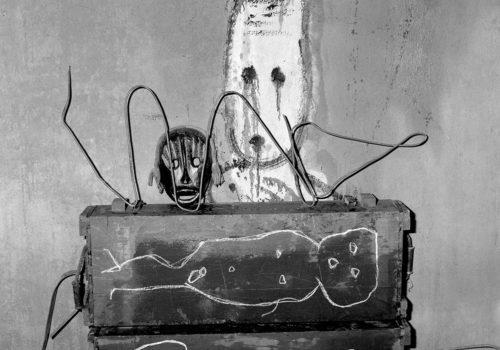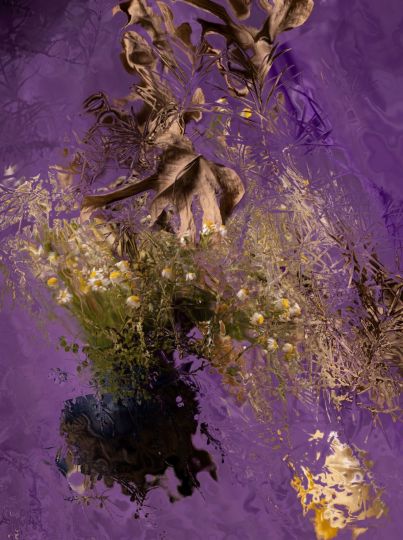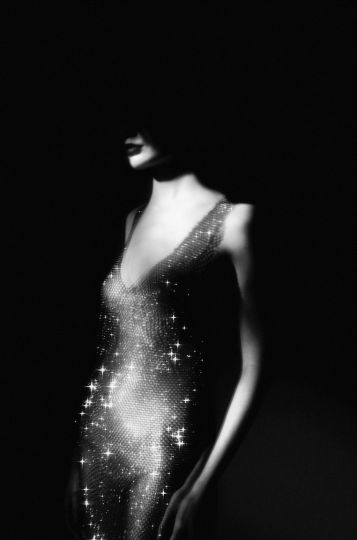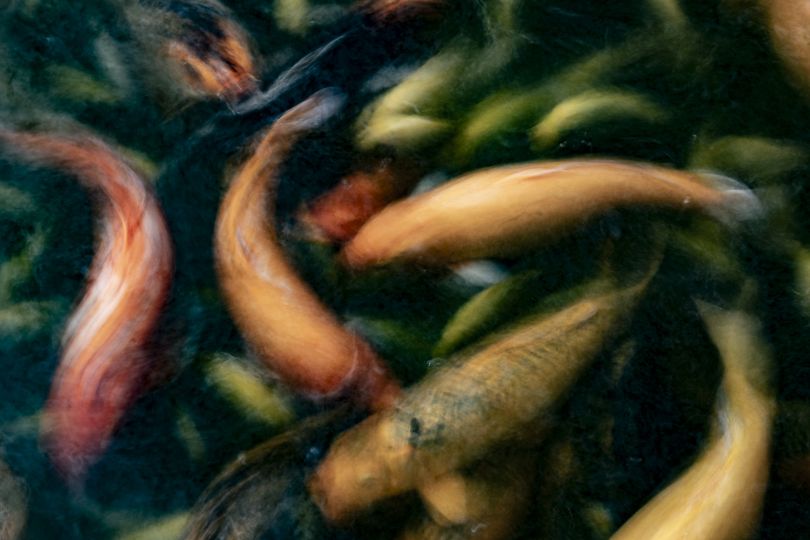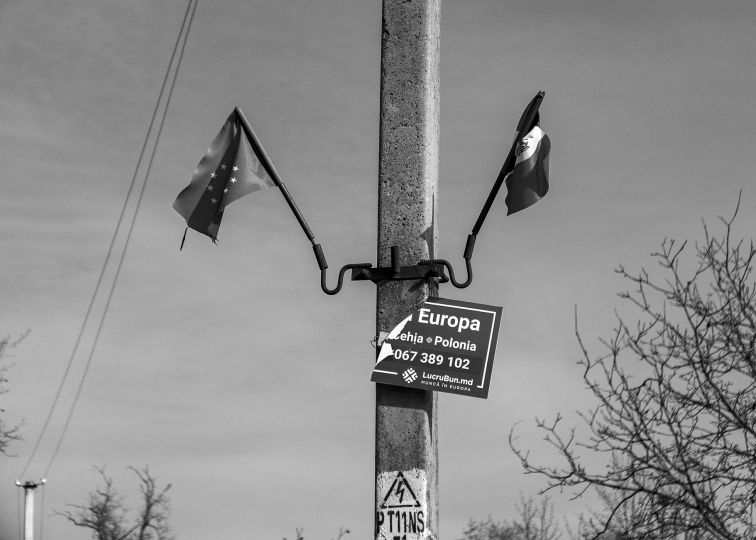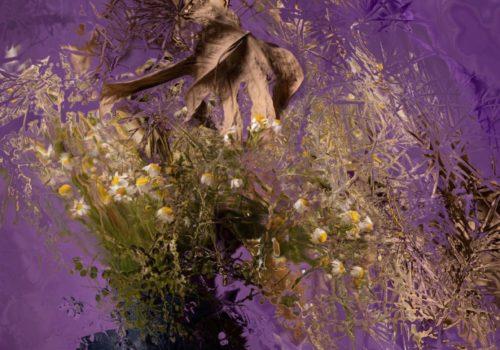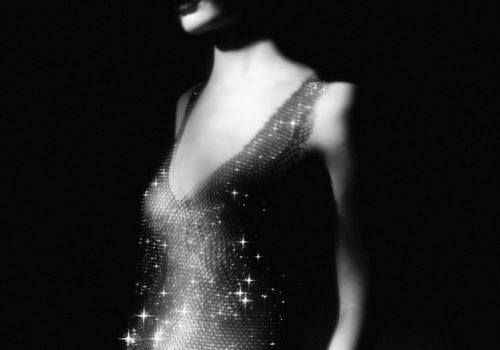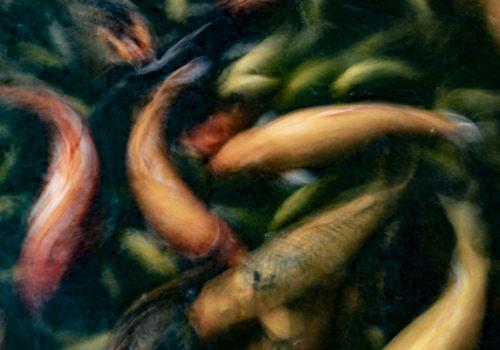Les Douches la Galerie presents, for the first time this Fall, a solo show by Roger Ballen, including his early series from the 80s and 90s. The South African photographer has been exploring the twists and turns of his subconscious for over forty years, creating stagings which invoke the themes of marginality, strangeness, the relationship between the human and animal worlds.
Enigma
Interview by Philippe Séclier
You were born in New York and studied psychology at the University of Berkeley, California. How did this training, and the interest you already had in the question of the margins – social and mental – cement the foundation of your work?
During the summer of 1972 I took a theatre course at Berkeley. It was taught by a Professor Oliver, an inspiring academic who introduced me to the theatre of the absurd and such playwrights as Beckett, Pinter and Ionesco. For nearly a month I read a play every day. This one-month course gave me my understanding of the theatre and would have an impact on my work for the next few decades. Also during the summer of 1972, I took a course in film-making in San Francisco. After completing the course, I decided to direct my first film, Ill Wind (1972), influenced by my studies of the theatre. The central actor in the film was Larry LePaule, a fellow classmate. Larry was a natural, slotting into the character that dominated my script. He had a habit of breaking into a Hitler oration and had a love affair with a German girl. In August 1972, with the script for Ill Wind completed, I began a month-long shoot with Larry. The film documents a Beckett-like character as he walks from place to place, going from nowhere to nowhere, leading a life of habit and rootlessness. The end of the film repeats the narrative of the beginning. I did not watch it again until 2014, when by chance I remembered that I had stored it in a safety-deposit box at a Johannesburg bank. The inspiration for the character of Stan in my film Outland (2015) can be traced back to Ill Wind. Certainly, it has become clear to me that my interest in outsiders, the marginalized, absurdity, extends back to my early youth, and not the point at which I began photographing in the small towns of South Africa in 1982.
You began your career as a geologist. How has this informed your approach to photography?
In 1982 I found myself in South Africa working in mineral exploration, travelling across vast expanses of the countryside. But while my profession provided me with a living, there were questions about my existence that it did not begin to answer. I still needed to use the camera to excavate layers of my inner life. In common with my work, peering below the earth’s surface for a hidden treasure, I began to do the same with the people and places I photographed, trying to pierce their outer layer to reveal their elemental selves.
You traveled to many countries, including a round-the-world trip, before settling in Johannesburg, where you lived since 1982. What attracted you to South Africa? Your very first series taken in this country, Dorps, which will be exhibited at Galerie Les Douches, initially shows photos taken outdoors. What was your creative process at thet time?
Up to the time I started photographing in the dorps, my camera of choice had been the more portable, less visible 35 mm. In the dorps, however, it gave way to the 6 x 6 cm Rolleiflex I had purchased in 1981. The square format of the Rollei fitted the greater stillness, the more classical and calculated composition, of my new images. Its size meant a slower, more deliberate approach, a more consciously acknowledged relationship with my subject. As I looked through the camera touching my stomach, I felt I was expressing my deeper self. The square was a perfect form, in which every side was of equal importance, equally balanced.
In addition, the images became more frontal. The wall was paramount; it was not background, but articulated surface, identified with the picture plane. On the smudged surfaces could be found wires, photographs hung in an uneven, incoherent way, children’s drawings, grease and dirt stains. Like a painter, the ‘living wall’ became my canvas. In fact, if many of the walls I photographed could be transported intact to a museum, they might be labelled works of art. At the same time as entering the interior spaces of people’s houses, I photographed the so-called outside world for the last time in my career. In the sunbaked landscape, images of doorways, verandas, cafés and pillars were captured up to the end of the Dorps project in 1986. Many of these buildings incorporate features of Victorian Cape architecture, but the essence of the style is best summed up in the Afrikaans expression ‘’n Boer maak altyd ’n plan’ (the countryman always has a plan). In other words, buildings were adapted to meet the needs of the owners and are an expression of function and personality.
What was it that suddenly led you to photograph interiors and meet people who were for the most part recluses, or at least struggling to cope with society?
For some time, I wondered what it was about the dilapidated, broken, un-monumental architecture that so attracted me. It was an aesthetic that I identified with, and which left a permanent mark on my work. Like the broken granite boulders that I often came across in my professional life, this element that I began photographing was a metaphor for the fact that no matter how hard we try, we will be defeated by time.
Perhaps my connection with outsiders stems from my countercultural upbringing and interest in the theories of R. D. Laing. The concepts of ‘normality’ and ‘insanity’ were crucial to his teaching, and when I ended up in the small towns of South African in the 1980s, I felt compelled to find out what ‘insanity’ meant for myself. One could say that insanity is the result of an unbridled subconscious; that insanity is the id. By making contact with the outsiders of these towns and expressing my inner psyche through the camera, I was in fact expressing my own id. Being in touch with your own so-called insanity could be thought of as a creative experience. For me, insanity, while being seen as a threat to Western society – to any society – became a source of knowledge.
When did you start intervening in the walls you photographed, and why?
The Outland period might be labelled the ‘Wire Period’. While the first wire photographs appeared in Dorps, most particularly the Outland project saw a proliferation of wire-related imagery. I drew with wire, sometimes linking the various formal elements in the image with straight lines, curves, or realistic figures. The wires provided me with a formal tool for integrating the various elements in the photograph. In painting, the line of a wire might simply be considered a line. But in photography, one is faced with the issue that a wire is more than that; it is part of the physical space. I am often asked what the wires in my photographs mean. My response is: look around, turn your head; wires are everywhere. They surround you, infiltrate your life. Their meaning is obvious…
The concept of using drawing in my photographs evolved initially as a result of photographing subjects against walls in homes saturated with their lines, marks and drawings – in other words, from street photography, from ‘real life’. As time progressed, I began to interact with my subjects and sometimes asked them to make drawings on the wall. I then made photographs integrating what they produced with other aspects within the frame of the camera. The drawings may not have been on canvas, but they were still works of art of a kind – direct links to the people who made them.
The animal world also features prominently in your work. What role does it play in your imagination? Is it linked to your childhood? Or to your move to an African country?
A central challenge in my career has been to locate the animal in the human being and the human being in the animal. Where did this obsession with animals come from? Perhaps it was chirping that I heard in 1950 as I lay in my mother’s womb. As a child, I was baffled by the fact that birds could fly while
I was stuck on the ground. I thought of them exclusively as creatures of the heavens. My personal belief is that the relationship between animals and humans is essentially adversarial and exploitative. Most societies try to deny this fact, but it is clear to me that the destruction of the natural world continues unabated. In the years I spent photographing Asylum of the Birds, I became more and more convinced that human nature is the ultimate culprit, responsible for the worst of all holocausts. The links that bind us to the planet are tangled and broken. What terrible things do the birds see as they look down from the sky? It is becoming difficult for them to find nests to return to.
What do you think is the definition of strangeness in your work?
I best way to describe what is strange in my work is the word enigma. In short, I do not have a lucid explanation for this part of my work. Many of the elements in my photographs are beyond my conscious mind; it might be years before I come to a conclusion about them. These are the images I am most inspired by, the ones I do not understand.
Little by little, figuration has given way to a form of abstraction in your photos, which have thus become paintings. How did this gradual shift come about?
The process of creating the Ballenesque aesthetic happened gradually, layer by layer over decades. One can only progress in one’s work by focusing on the images one has taken and building on the results.
Are you aware of having broken the photographic codes of fine art photography?
It is one of the most gratifying comments that an artist can receive that his work is recognizable in the media that one has worked in. Given the fact that billions, maybe trillions of photographs have been taken over the past decades it is a real complement to be recognized as someone who has contributed in a meaningful way to one’s field of endeavour.
You have just set up your own foundation in Johannesburg. Why have you done this, and what are your ambitions?
The center opened in March in Forest Town in South Africa and the first show is called The End of the Game. It deals with destruction; it’s part documentary, partly Roger Ballen. It’s documentary in the sense that we have old photos, guns, bullets, and diaries from around the 19th century when the first white people came to Africa. This was the beginning of the destruction of wildlife. The other part of the exhibition consists of my work: In my photos and installations which deal with this topic in a more abstract way. The exhibition has a psychological impact and grapples with the problems of humanity and its relationship to nature. It will stay here for a while, I don’t want to change it for long.
So far, we have had a great response from many people who have never been to a museum before. I think 90% of the population here has never visited a museum or a gallery so if they come here, they are really amazed.
The Inside Out Centre for the Arts has four main pillars. First, it has to be related to the African continent. Second, it has to have a psychological impact. Third, it has to directly or indirectly do something with “the Ballenesque”. Lastly, it must have some relevance to the community here.
Roger Ballen
Born in the US and based in Johannesburg, South Africa, Roger Ballen is one of the most important photographers of his generation. He has published over 25 books internationally and has collections in the most prominent museums in the world. In 2022 Thames and Hudson published his book Ballenesque, Roger Ballen: – A Retrospective, a major survey of his collected works.
His oeuvre, which spans five decades, began with the documentary photography field but evolved into the creation of distinctive fictionalized realms that also integrate the mediums of film, installation, theatre, sculpture, painting and drawing. Ballen describes his works as “existential psychodramas” that touch the subconscious mind and evoke the underbelly of the human condition. They aim to break through the repressed thoughts and feelings by engaging him in themes of chaos and order, madness or unruly states of being, the human relationship to the animal world, life and death, universal archetypes of the psyche and experiences of otherness.
Through his unique, complex visual language, and universal and profound themes, the artist has made a lasting contribution to the field of art. Ballen has also been the creator of several acclaimed and exhibited short films that dovetail with his photographic series. In 2022, he was one of the artists that represented South Africa at the Venice Biennale of Art.
He is also the founder and executive director of the Inside Out Centre for the Arts in Johannesburg, which opened to the public in March 2023. The Centre aims to promote an awareness of African related issues through exhibitions and educational programmes. Its first show, entitled End of the Game, explores the decimation of wildlife in Africa both through historical artifacts and Ballen’s photographs and installations.
Curators : Françoise Morin & Philippe Séclier
Roger Ballen : Enigma
From september 22 to november 18, 2023
Les Douches la Galerie
5, rue Legouvé 75010 Paris
www.lesdoucheslagalerie.com

